
Frankfurt Airport. A new runway is being created and two of the big players involved are: DIE PUMAS and the Arocs
Economics & Logistics
The all-new Terminal 3 is currently shaping up to the south of Frankfurt’s airport, on the grounds of the former US military base there – with the help of DIE PUMAS and the Arocs.
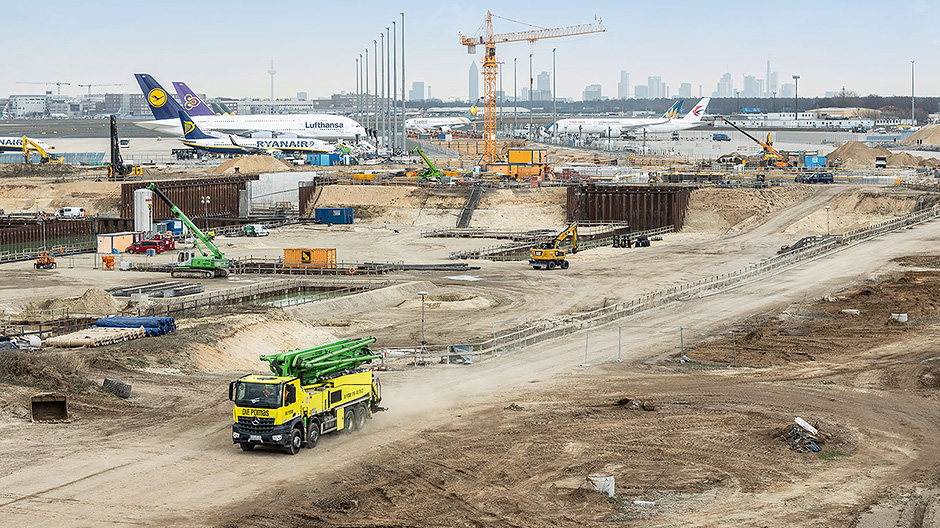
Frankfurt Airport is expanding. For the first time ever, 2019 saw more than 70 million passengers travel from the airport in a trend that is likely to continue. In order to maintain their position as an international hub, the airport’s operator Fraport needs to increase its capacity. This is why the former US military base which borders the southern runway was chosen as the location for the Terminal 3 development. As of 2023, 21 million passengers are expected to arrive and depart from here annually. Despite this vision, there’s still a long way to go yet. A few slip roads are already in place. And just behind the site’s boundaries, a few airlines have already taken up their positions. The rest of the picture, though, looks more like a huge sandpit about the same size as 22 football pitches. And in it, you’ll find dozens of bucket excavators, cranes, and construction site vehicles. Including some from DIE PUMAS. And no, we’re not talking about the big cats here.
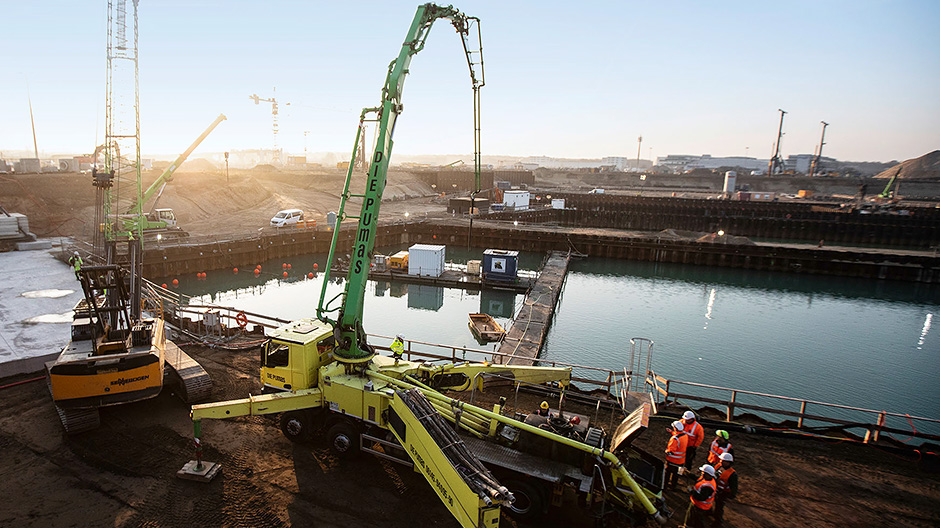
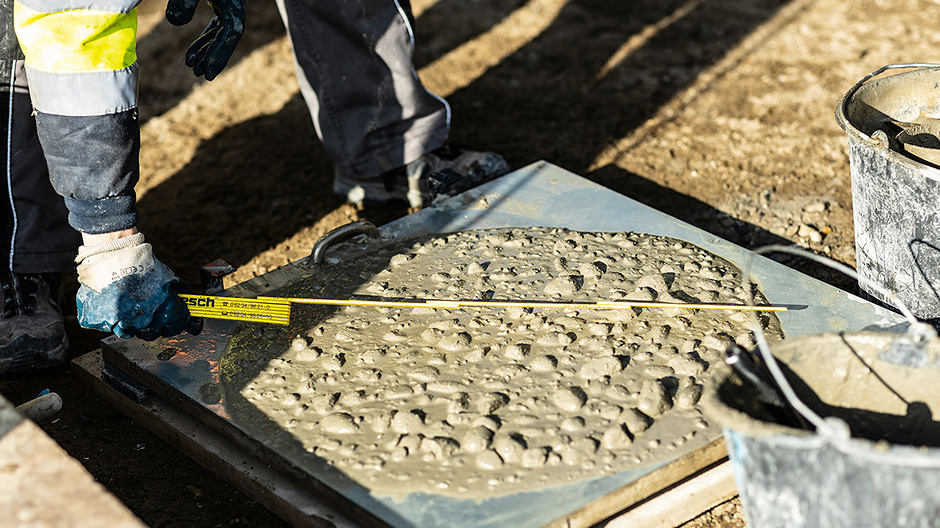
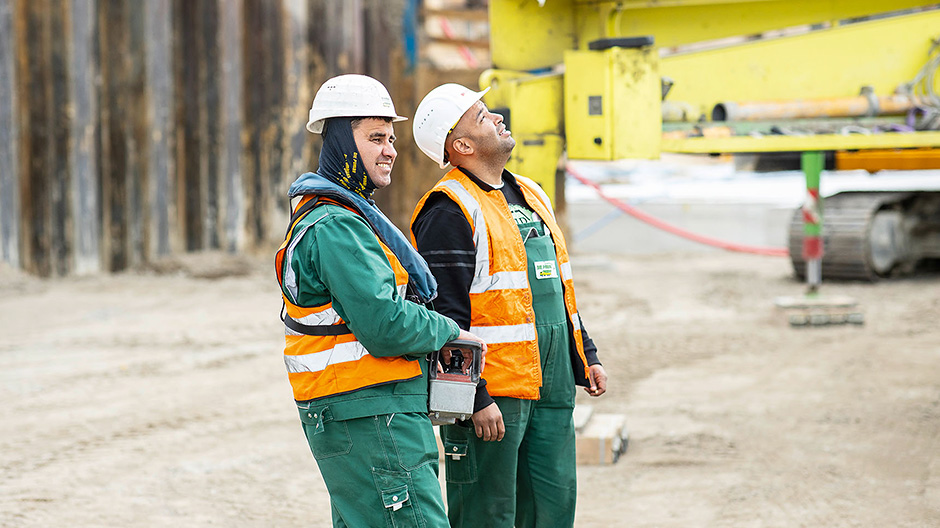
DIE PUMAS is an abbreviation of “DIEnstleister für BetonPUmpen und VerteilerMASten” – to you or I: service providers for concrete pumps and distribution masts. And customer references for the company from Weilbach show that DIE PUMAS are more than capable of tackling large-scale projects. Their portfolio ranges from eye-catchers on Frankfurt’s skyline right up to taxiway bridges connecting up with the north-west runway – one of the largest single-piece cast concrete surfaces around. With schools, nurseries, swimming pools and numerous private houses, conservatories and garages to their name, the strong company with its 43 employees is involved in several thousands of operations per year. Their latest gem: Terminal 3 at Frankfurt Airport. DIE PUMAS already has its pumps working hard at various sections along the construction site of this mammoth project. Today’s task is to tackle the first section of the underfloor. The crux: it will be cast under water.
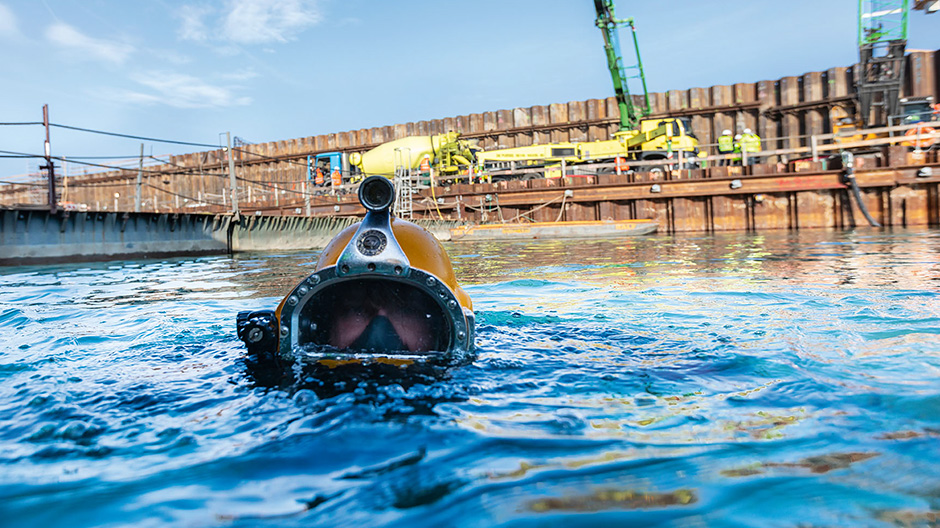
Interplay. On land, DIE PUMAS has everything under control, whilst under the water, a diver guides the pump under the water.
Six metres below the ground water level.
“Travellers will soon be able to find everything from check-in to boarding gates on a single floor area,” confirms Axel Bender, Managing Director at DIE PUMAS. “The entire technological systems of the building are thus a few floors lower down. The first basis for this will be created today – six metres under the ground water level.”Bender drove together with his Sales Manager Thomas Heil to the construction site. A standard case, with the pair wishing to be present as often as possible on-site whenever their pumps are in action.
Just now, a shining yellow Arocs 3242 drives up. The 32-tonne concrete pump riding piggy-back is carried with ease by the robust truck towards the trench. In all, the company’s fleet has 40 trucks. And what’s the percentage of Mercedes-Benz among it? 100 percent. “Our biggest pump has a reach height of 63 metres, whilst the smallest measures 20 metres,” explains Head of Sales Thomas Heil. “That one there can reach a height of 42 metres.” Heil points to the unit which is currently being unfolded into the sky where it makes for good competition with neighbouring cranes. “Today we have two part-floors ahead of us, each containing 300 cubic metres,” he explains as he laughs with a good degree of motivation in the direction of the trench, rubbing his hands at the same time: “And that’s a challenge we’re happy to take on.” For the entire floor alone, 39,000 cubic metres of concrete will be required. Meanwhile, for the entire shell of the Terminal 3 building, they have calculated for 300,000 cubic metres. That corresponds to around the volume of the Gasometer exhibition building in Oberhausen.
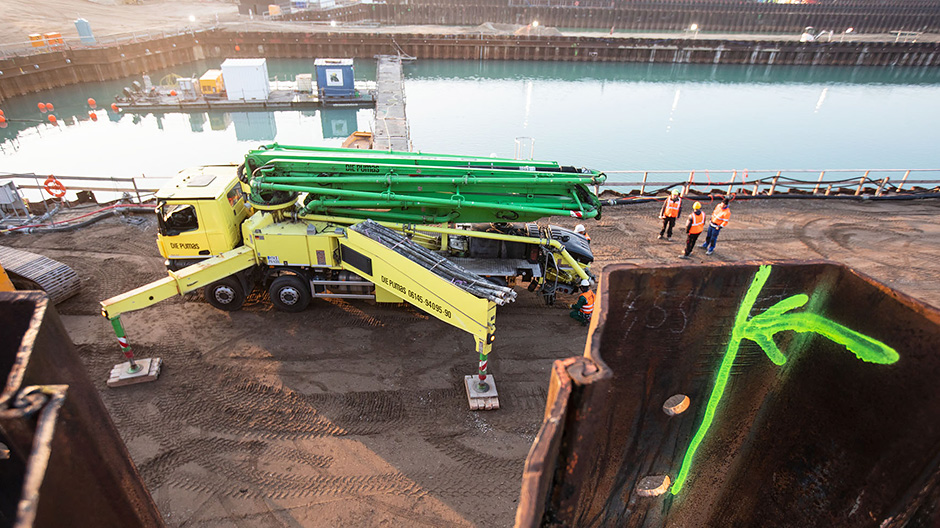
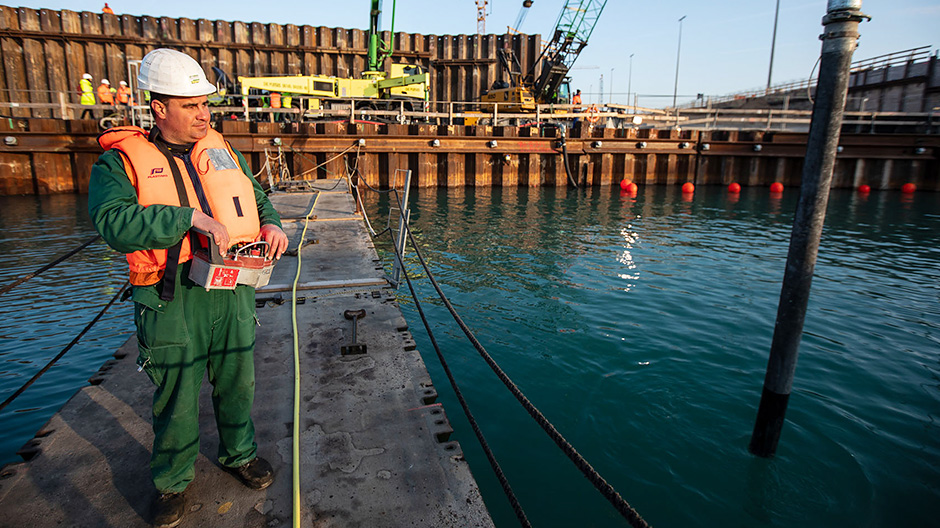
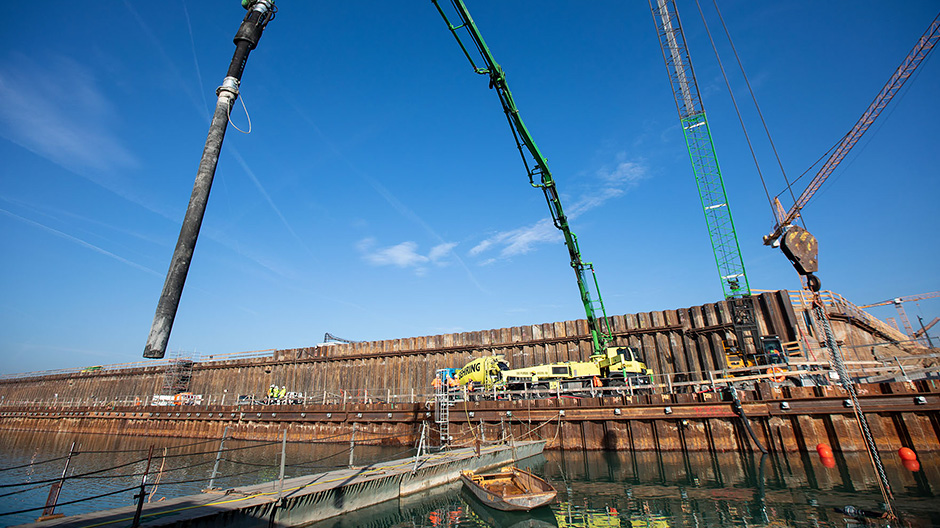
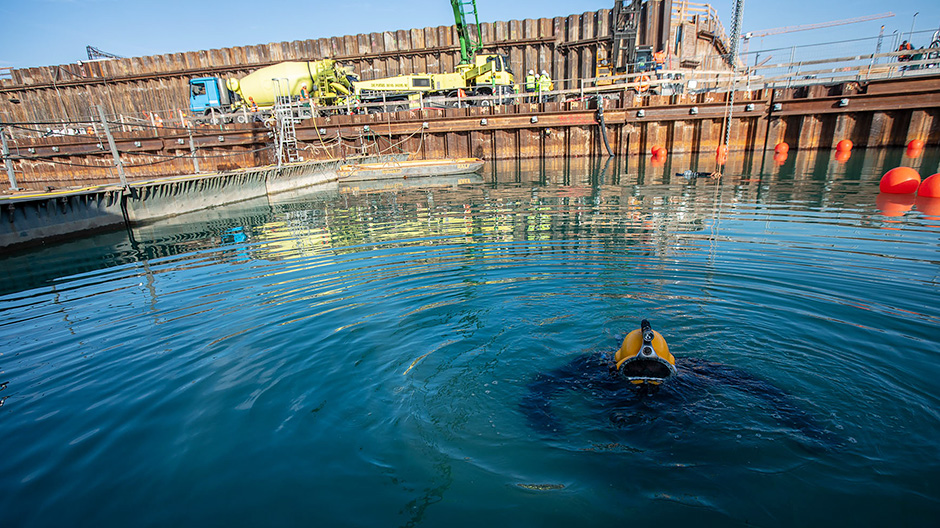
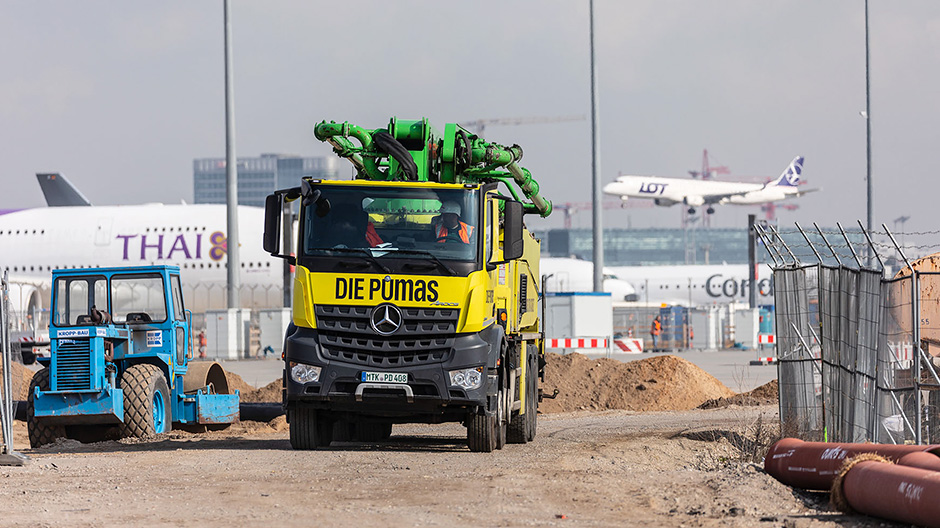
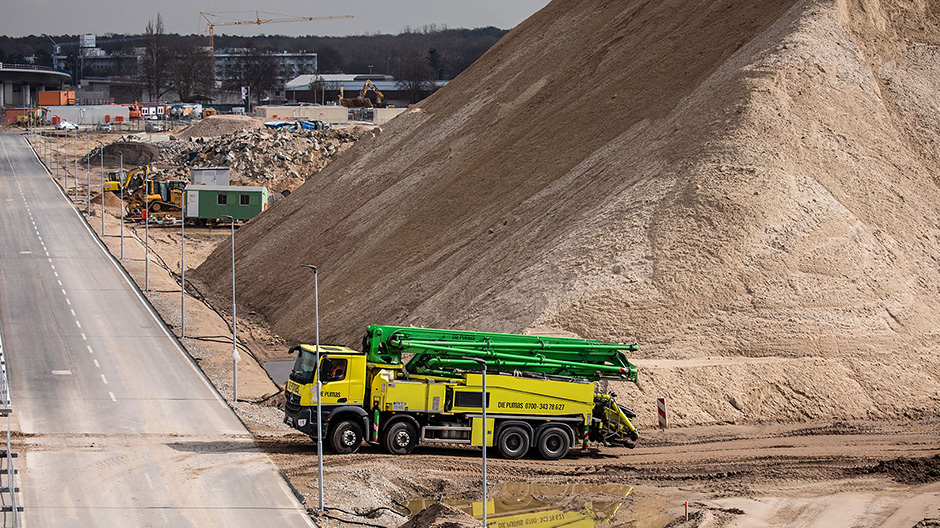
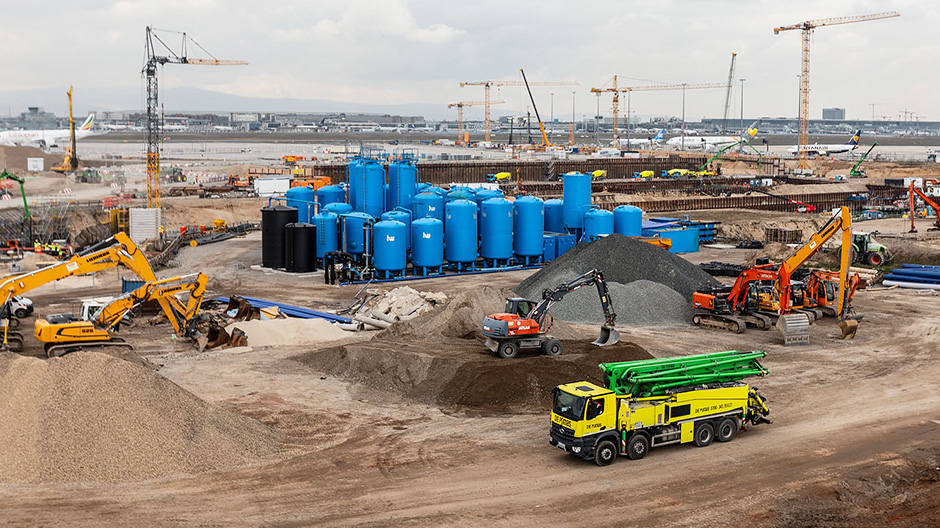
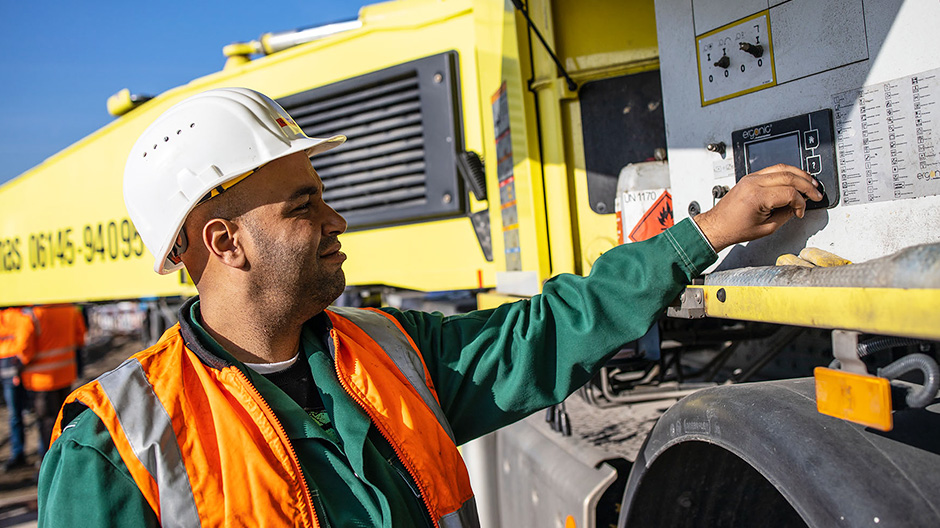
But how exactly does pouring concrete under water work? The ingredients required are: divers, two-way radios, concrete mixers, special underwater concrete and, of course, concrete pumps – in this case, those of DIE PUMAS. From the concrete mixer, the material travels via a funnel into the pump. Once there, two cylinders move the cement mix incessantly through a pipeline on the mast right up to the location where it is required. That’s the easy bit. But then there’s the problem of the water. As the concrete can’t just be tipped into the pool of water, divers are required to keep a close eye on what’s happening under water. The divers and concrete pump operator are in constant contact by means of two-way radios. The operator then follows the instructions of the underwater team and controls the mast using the so-called dopper. “It’s a sort of bell-shaped end piece connected to the pipeline,” explains Heil. “It serves to help the concrete flow out uniformly so that, at the end, we’re left with a level surface under the water.”
“Who knows, maybe I’ll fly off on holiday from this very spot one day?”
– Axel Bender, Managing Director at DIE PUMAS
A further challenge: “When pouring concrete under water, there must be no air in the pump and the concrete. That’s why we have to ensure that the pump is permanently filled.” The concrete mixers pull up relentlessly in front of the pump to ensure its hungry funnel is kept nice and full. “A concrete mixer can hold around 7.50 cubic metres of the material which corresponds to around 17 tonnes in weight – and after five minutes, it’s already empty again,” Heil tells us. That’s why a concrete manufacturing facility is set up directly on the construction site. Here, the concrete is produced continually and driven across to the excavated area. “This proximity has another valuable advantage: concrete should be used within 90 minutes of its manufacture. So we’re well within that figure here.”
Not your average apprenticeship.
Axel Bender also contentedly observes the smooth interplay between the concrete mixers, divers and his employees. “That goes to show just how well we all understand each other,” he says. “We don’t transport a product, nor do we produce it. You can’t just rent our vehicles on their own – they’re only available together with our team. We are a totally classic service provider.”
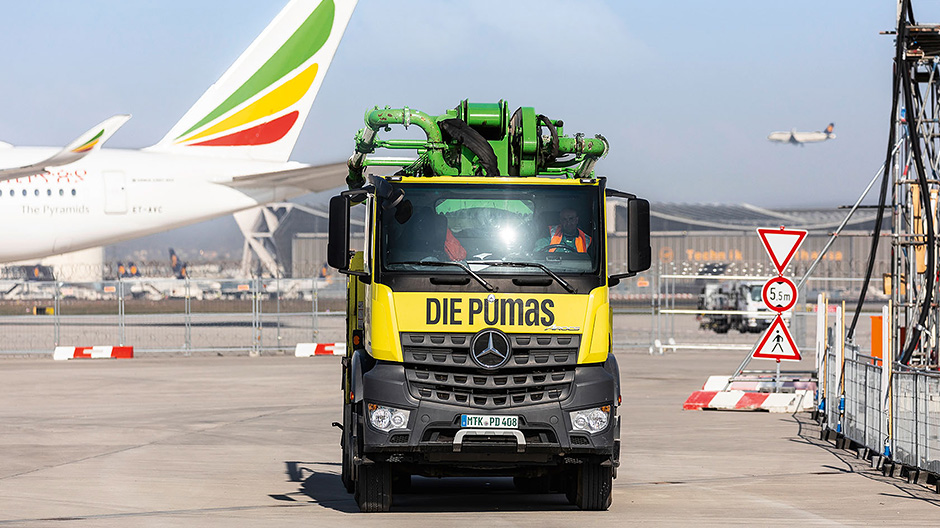
All-stars. The fleet comprises 40 Mercedes-Benz trucks, including diverse concrete pump vehicles.
The Managing Director also ensures his drivers – who incidentally are also concrete pump operators – also share his view. Their tasks range from operation to maintenance and repair of the pump, as well as securing and setting up the machinery on a diverse range of surfaces. Even co-ordination between the various parties on the construction site, as well as communication with the site’s foreman are part and parcel of their job.
A demanding and varied task, with only one downside according to Mr Bender: there is no recognised training scheme for concrete pump operators in Germany. “Learning by seeing and doing is the only way – a little like learning to drive.” But as can be seen at DIE PUMAS, this can bear great fruits. For the construction of the new terminal alone, the company is helping with the individual boarding gates, parts of the main building, the multi-storey car parks and the drop-off zone which takes travellers directly to the check-in and baggage drop areas. The company has already carried out work at the aviation hub in the past; notably working on the airport tunnel, the east and west taxiway bridges and also the “The Squaire” Airrail Center.
Back to the building site: after six hours, the first floor is finished. Soon, the water in Pool 1 will be able to be pumped out. The team is doing so well with their timings that they’re able to move the pump and pour a second floor in Pool 2 on the same day. “Who knows, maybe I’ll fly off on holiday from this very spot one day?” ponders Bender looking at the huge pools. And if you look closely, you won’t just see the blue water and the sand of the construction site reflecting in his eyes, but also the odd palm tree here or there.
Photos: Alex Kraus




Comment
Please log in to post a comment.
15 comments
👍👍👍👍👍👍👍🤘🤘⛟😎
👍👍👍👍👍👍👍🤘🤘⛟😎
Gruss Richard
Gruss Richard